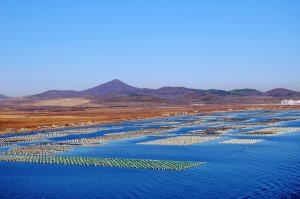15th November 2024
In the first nine months of 2024, cumulative fishmeal production increased by almost 23% compared to the same period in 2023*. The significant year-on-year increase of the Peruvian cumulative supply was the main factor behind such positive trend, since the rest of the regions analysed in this report reported a decline compared to January-September 2023.
 In Peru, which historically has represented on average 20% of the global fishmeal and fish oil production, almost 20% of the 2.51 million-mt quota has, to date, already been fulfilled in the North-Centre region since the fishing season started on 1st November.
In Peru, which historically has represented on average 20% of the global fishmeal and fish oil production, almost 20% of the 2.51 million-mt quota has, to date, already been fulfilled in the North-Centre region since the fishing season started on 1st November.
When it comes to fish oil, total cumulative output through September 2024 was nearly unchanged, showing just a 1% increase year-over-year. This modest growth was primarily driven by the increased output from Peru almost totally offset by declines in cumulative production from all other regions.
* These data are based on statistics shared by IFFO’s membership, which accounts for 55% of global marine ingredients production (Peru, Chile, Denmark / Norway, Iceland / North Atlantic, USA, African countries, Spain).
China’s aquaculture sector now in low season
 China’s production of fishmeal and fish oil has remained subdued so far this year due to less wild captures. Production levels in 2024 are projected to fall below those of 2023. Meanwhile, cumulative fishmeal imports through September rose year-over-year, reflecting increased stockpiling despite off-season demand.
China’s production of fishmeal and fish oil has remained subdued so far this year due to less wild captures. Production levels in 2024 are projected to fall below those of 2023. Meanwhile, cumulative fishmeal imports through September rose year-over-year, reflecting increased stockpiling despite off-season demand.
The aquaculture sector has now entered its low season, and total aquafeed production for 2024 is expected to fall below what was produced in 2023. Fishmeal consumption is likely to rebound in conjunction with the start of the next main aquaculture season in April 2025.
Meanwhile, the pig sector is entering its peak demand season. Fishmeal consumption in this sector remains primarily driven by commercial piglet feed, which is mostly purchased by medium- and small-scale farmers.








